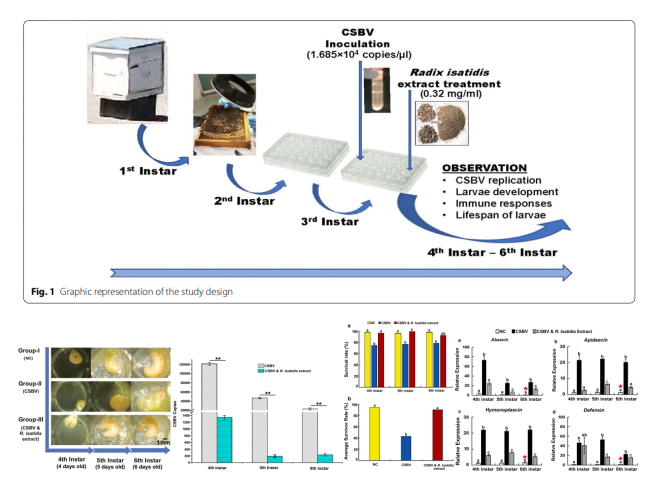A Study on Mechanisms of Radix Isatidis and Its Active Components in Inhibiting CSBV-Infected Honey Bees
Date:2022-08-31
Institute of Apicultural Research of Chinese Academy of Agricultural Sciences studied the mechanisms of Radix isatidis and its active components in inhibiting CSBV-infected honey bees in cooperation with the apicultural laboratory of U.S. Department of Agriculture recently.
According to the study, extracts from Radix isatidis significantly inhibited the replication of Chinese Sacbrood Virus (CSBV), alleviated the effect of CSBV on larval growth and development, reduced the mortality of Apis cerana cerana larvae, and regulated immune gene expressions of infected honey bees.
Relevant findings were published in Virology Journal and granted the national invention patent (CN 111265596 B).
Meanwhile, the study also showed that adenosine and L-proline in extracts from Isatis indigotica might inhibit honey bees from being infected with CSBV through immunomodulation. Relevant findings were published in Virology and granted the national invention patent (CN 111481541 B, CN 111297884 B).
Sacbrood Virus (SBV) mainly infects honey bee larvae, which causes massive fluid collection into sacs in infected larvae. CSBV is a geographic strain of SBV. The study demonstrated the antiviral activity of extracts from Radix isatidis, identified adenosine and L-proline as the major components in extracts from Radix isatidis based on the natural product identification techniques, and revealed the antiviral effect of adenosine and L-proline on CSBV infection and their anti- CSBV mechanisms. Besides, it proposed that the inhibition of adenosine and L-proline on CSBV replication might be the result of immunomodulation rather than a direct antiviral effect for the first time, and put forward new ideas on SBV immune-mediated pathogenesis, breaking a new path for developing therapeutic strategies against honey bee infection.
Link: https://doi.org/10.1016/j.virol.2022.05.008
https://doi.org/10.1186/s12985-021-01550-y

